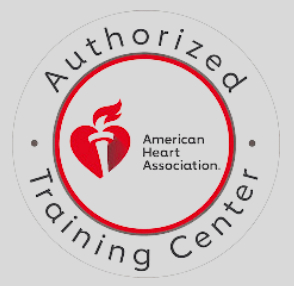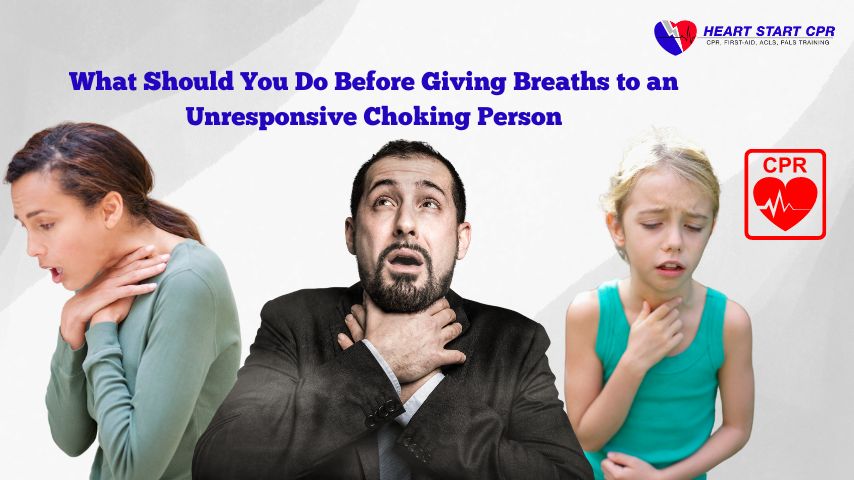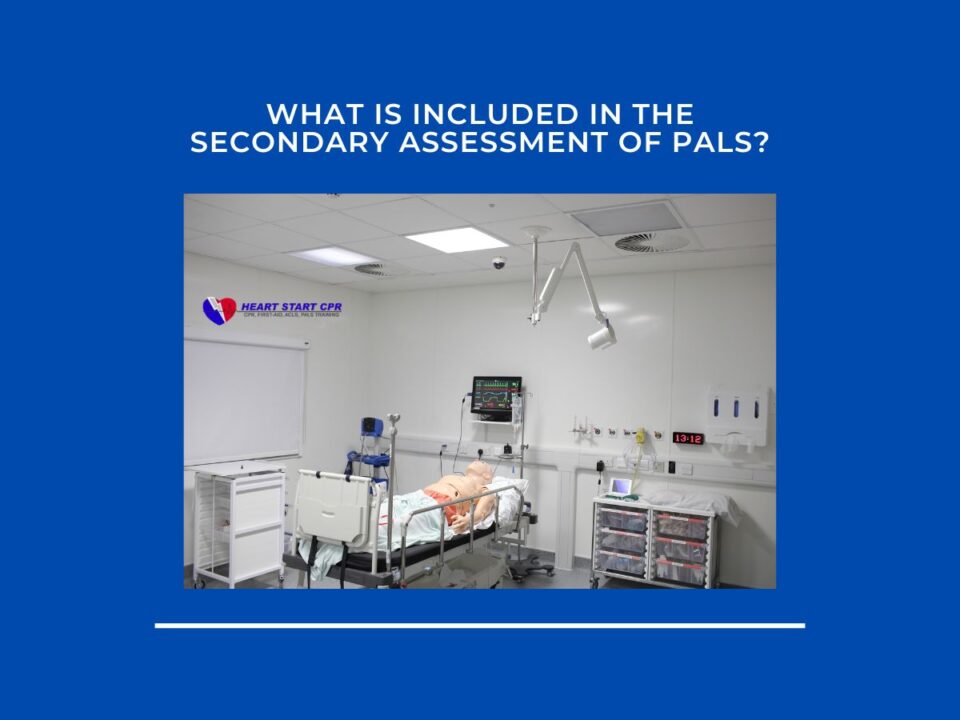
What is the Proper Procedure for Delivering Rescue Breaths to an 8-year-Old Child?
June 4, 2024
What Special Circumstances Should a Rescuer Consider When Using an AED?
June 6, 2024Take Urgent Action if Someone is Choking
Witnessing someone choking is a scary situation. Within seconds, a person can go from talking to turning blue as their airway is blocked. However, staying calm and taking immediate action saves their life. If an adult, child, or infant appears to be choking and is unresponsive, it is crucial to handle the situation carefully yet swiftly. The following steps outline what should you do before providing breaths to help dislodge the blocked airway.
Step 1: Assess the Situation and the Person’s Consciousness
What to do if someone is choking? If you find someone in such a situation, the first thing to do is assess their level of consciousness. Gently shake their shoulders or back. If they are unable to speak, breathe, or cough forcefully, they are choking and in need of immediate help.
Do not assume the person is conscious just because their eyes are open. Unconsciousness can occur very quickly when the airway is blocked. Check for signs of responsiveness by gently shaking them and speaking loudly close to their ear. If there is no response, they are unresponsive, and you must intervene.
Step 2: Call for Emergency Help
Once determining the person is choking and unresponsive, call for emergency medical help right away. Dial the emergency number for your location immediately, such as 911 in the United States. Tell the operator “Someone is choking and unresponsive – I need help” and provide your location details clearly. Then hang up and begin back blows and chest thrusts without delay. Having emergency services dispatched promptly allows for the fastest response while you perform first aid for choking.
Step 3: Perform Back Blows
For an adult or child, begin by performing back blows. Position yourself slightly behind and to one side of the choking victim. Support their chest with one hand and lean them slightly forward at the waist so their upper body is tilted.
Deliver up to 5 sharp blows between the person’s shoulder blades with the heel of your other hand. The blows should be delivered with enough force to help dislodge the obstruction but not injure the person. Alternate between sides if needed. Back blows should cause a sudden increase in intrathoracic pressure that may expel the obstruction.
Step 4: Perform Abdominal Thrusts
If back blows are ineffective, proceed to perform abdominal thrusts, also known as the Heimlich maneuver. Position yourself behind the person and wrap your arms around their waist. Place one hand just above the belly button and wrap the other hand over it.
Pull inward and upward abruptly and with force 5 times in quick succession. As with back blows, use enough power to relieve the obstruction but not injure the individual. Repeat sets of 5 thrusts until the blockage is cleared or the person can breathe/cough on their own. Abdominal thrusts increase intrathoracic pressure from below to potentially dislodge the object.
For infants under 1 year, perform up to 5 back blows using the heel of one hand between the shoulder blades. Then, follow with 5 quick chest compressions by placing two fingers.
When to Provide Breaths
If, after performing back blows and abdominal thrusts/chest compressions, the person remains unresponsive and shows no signs of breathing, it is time to administer breaths. The goal of the initial interventions is to try and clear the airway obstruction without the added risk of passing oxygen if breaths are not absolutely necessary yet.
Breathing for another person should only be initiated once other methods have failed and confirmed ventilation support is required. Introducing breaths too early could push a partially blocked object further into the trachea. Ensure proper technique is followed to avoid causing additional harm when ventilating an unresponsive choking victim.
Prepare to Give Rescue Breaths
Before delivering breaths, it is important to prepare properly and position the person effectively:
Step 1: Tilt the head back and lift the chin up using your hand on the forehead and two fingers under the point of the chin. This opens the airway.
Step 2: Pinch the nose shut using your thumb and index finger to seal it closed. For infants, use one hand to tilt and seal the nose.
Take a normal breath and make a complete seal over the person’s mouth with your mouth, being careful not to seal their nostrils accidentally.
Step 3: Blow into their mouth for one second to make their chest rise, being watchful for the chest to fall before the next breath.
Step 4: Remove your mouth and watch for the chest to fall fully before giving the subsequent breath. Give one breath every 5 seconds, about 12 breaths per minute.
Step 5: Check for signs of breathing in between each set of 2 breaths. Discontinue if spontaneous breathing resumes.
Step 6: Properly opening the airway and completely sealing your mouth over the victim’s is key to effectively ventilating their lungs without risking further injury. Taking a few extra moments for correct positioning helps ensure rescue breathing is administered safely and efficiently.
Conclusion and Final Tips
By following the outlined steps systematically and checking on the person after each set of maneuvers, you maximize your ability to quickly clear an airway obstruction until advanced medical aid arrives. The few crucial minutes it buys could be the difference between life and death. Always stay calm under pressure, focus on effectiveness over speed, and encourage others to notify emergency services as soon as possible. With the right assessments and procedures in place, you’ll feel better equipped to confidently handle a true choking emergency if it ever arises.
Frequently Asked Questions
What if the person vomits during rescue efforts?
If the person vomits or the object is expelled from the airway during initial interventions, roll them onto their side into the recovery position. Clean the mouth and check breathing has resumed, but do not restart interventions unless issues reoccur. Vomiting is the body’s natural response and usually means the blockage has cleared.
How long should CPR cycles continue if still unresponsive?
If the choking person remains unresponsive with no breathing after 2 minutes of 30 chest compressions and 2 rescue breaths, continue CPR cycles until emergency medical services arrive to take over. Continue resuscitation efforts until the person starts breathing or medical help declares further attempts should stop.
Can I administer rescue breaths to an unresponsive choking person if I’m not trained in CPR?
Yes, you can provide rescue breaths to an unresponsive choking person even if you are not trained in CPR. The most important thing is to act quickly and provide rescue breaths to restore the person’s breathing.






